- Home
- Gary Paulsen
The Schernoff Discoveries Page 3
The Schernoff Discoveries Read online
Page 3
“Why?”
“It’s a matter of standing.”
“Standing?”
He nodded. Outside a gust of wind blew snow around the football field and rattled the study hall windows.
“I’ve been doing a little research,” he said.
“Oh.” This, I had found, was always dangerous. When he entered the research phase of his ideas, he had already decided to implement them.
“One of the reasons we have so much trouble becoming popular and remaining popular is our lack of social standing.”
There was so much wrong with this statement that I turned in my seat and stared at him. I had long before decided I would never be popular. In fact I had concluded that if I simply survived my adolescence I would be happy.
“Studies done on primitive tribes reveal that if the social standing is improved, the personal popularity of the subject goes up as well.”
“Primitive tribes that ski?”
He smiled, a condescending grin aimed at my stupidity. “Of course not. I extrapolated that idea myself. Of all the sports available in the winter, skiing is the most glamorous.”
“Glamorous …”
“And if we become proficient at skiing, our social standing will rise more precisely because the sport is so glamorous.”
“It will?”
“Exactly. It’s as basic as physics. I wonder why I never thought of it before. All we have to do is learn to ski. How hard can it be?”
I could have pointed out lots of things: that we lived in northwestern Minnesota, where the nearest mountain was roughly a thousand miles away, that neither of us owned a pair of skis, that neither of us was athletic, that I was sure I would somehow be injured or damaged or punished or all of the above, which seemed to happen every time we tried one of his ideas. But the study hall monitor started watching me then and since it was Mr. Marley, the shop teacher who delighted in thumping students with a birch rod he brought from shop (this was back when teachers could and often did discipline you), I remained quiet. By the time I objected it was too late.
“Harold, where did you get the skis?”
“They were in my aunt Margaret’s garage, up in the rafters, wrapped in an old rug and covered with a piece of tarp. I noticed them some time back when I was up there doing research on rats. There is an excellent rat population in the garage and several central nests in the loft area. You know, they’re quite social.”
“Where did your aunt Margaret get the skis?”
“Oh. Her brother was in the ski troops in the army—aren’t they perfect?”
For making a bridge, I thought, bending under the weight of the pair I was carrying, plus two enormous ski poles made of bamboo that seemed taller than me. The skis were huge—laminated wood four inches wide, an inch thick and a full eight feet long. On each ski there was a binding made of steel an eighth of an inch thick with a toe cup that wedged the foot in and a coiled spring that clamped back around the heel like a vise. When the foot was in place and the clamp was latched, the skier’s foot was permanently attached to the ski—as strong as putting a screw through your foot, I thought.
We were heading for Black Hill—also known as Old Nut-Buster in memory of a boy named Danny Halverson, who tried the hill on a bicycle in the summer and caught a drainage culvert crotch-first after leaving the bicycle at thirty or forty miles an hour. As Danny said, the speed didn’t matter as much as what got crunched.
Winding through town was Crooked River. Most of the country was prairie-flat, but south of town the river cut through a series of bluffs and where three bluffs ran down to the river’s edge there were hills. They were not anything like mountains, to be sure, or even foothills.
Along the riverbank the city fathers had put a curved park and two of the bluffs came down to the park in gentle slopes a hundred or so yards long. But one bluff ran parallel to the river. Over millions of years the river flooding every spring had cut and rounded and scooped this bluff until the fall was much steeper than the rest. Old Nut-Buster. A two-hundred-yard drop to what seemed certain death.
“It’s vertical,” I said as we came to the top.
“Nonsense. I studied the topographical maps in the courthouse and while the top of the drop is over seventy degrees from the horizontal it decreases at the bottom to a little over forty-five degrees.”
Vertical, then forty-five degrees until it flattened out along the bank of the river to run another hundred or so yards to where the bank curved to the right and where if we didn’t stop we’d head out across the river. The water was frozen, of course, but it moved fast through this cut and here and there were open holes where ice had not formed. I remembered stories of children and drunks who had fallen through the ice and been swept away, never to be seen again, and more to the point, never to be seen by Julie Hansen again. “We’re going to die.”
“Well, of course you don’t have to do it.”
I had thought of that.
“You can let me go alone.”
I had thought of that as well.
“And I admit there is probably some risk and I may fail.”
And that too had entered my mind. I had pictures of dragging his body home tied to his skis. Better his body than mine.
“But think—what if I succeed and become a great skier? What if that happens and you haven’t done it and I become popular and you aren’t and Julie Hansen talks to me and not to you?”
He had me there. Julie was the most popular, the most beautiful, the most blond, the most pert, the most white-teeth-with-no-braces, the most bouncy ponytail, the most cheerleader—just the most of all. I on the other hand was a seething ball of hormone-driven insecurity and if there was a chance, one chance in all the chances of the world that I could get Julie Hansen to acknowledge that I even existed …
“You go first,” I said.
“I considered that,” he said. “And at first it seemed the correct thing to do. But there is science afoot here” (he was reading Sherlock Holmes at the time) “and since we both know I am more of a scientist I think it best that you go first so I can make deductions on the basis of your effort, to refine our knowledge.”
“I thought you’d suggest that.”
“Besides, there’s the fact that the one who goes first will earn the most glory.”
“Harold,” I said, swinging my arm around at the white snowscape surrounding us, “there’s nobody here to know if I’m brave or not.”
“I will,” he said, looking out across the river. “And I’ll tell everyone that you went first.”
“Oh. Good, then. I was worried about that.” And while there was sarcasm in my voice I knew he had—as usual—talked me into it.
I pulled my gloves off and spent an extraordinarily long time bolting the skis to my feet. Then I stood, put my gloves back on, took the poles in hand and focused all my brainpower on stopping time, the way I did if I had to go to the dentist or on one of my many trips to the principal’s office. I could just stand here forever, I thought. That would be just fine.…
“Well?” Harold looked down the slope. I had been avoiding doing just that, but I now I looked. The world seemed to drop away beneath the tips of my skis.
“I don’t know,” I started. “It seems more like falling than skiing. You know, like just falling off a building or—”
I’m not going to say Harold pushed me. I don’t think he would do that. I was, after all, his only friend and he was my only friend and to say that he pushed me would be wrong.
But one second I wasn’t moving and the next second I was sliding slowly, almost imperceptibly, over the edge until I was looking straight down Nut-Buster. Then my skis tipped down, everything hung for part of a second, hung so that I could look sideways at Harold, see into his eyes, see into his soul. And then I was gone.
I was virtually in free fall, with just time to think that nothing human was meant to go this fast with two sticks attached to his feet. My world became a blur and I thought no, this is
wrong, I must slow down, and I let out one elongated scream when I curved out at the bottom and roared across the flat park before coming to a stop, miraculously, eight feet from hitting a concrete picnic table.
I turned clumsily, step-over-step-over, until I was facing back up the hill. I wiped my eyes and saw Harold, a small speck standing at the top.
“How was it?” he called.
I found my tongue—I thought I’d swallowed it. “Fine. A great run,” I yelled.
“Why did you scream?”
“Excitement,” I yelled. I’ve never been so excited in my life, I thought. I almost wet my pants.
I honestly believed he wouldn’t follow. Not after watching me, hearing me. But I was wrong.
I saw him bend over and attach his skis. Then he pulled something from his pocket. It appeared to be a leather flight helmet, which he strapped onto his head. He picked up the poles. He was taller than me but they still seemed to tower over him.
He paused—I thought perhaps to pray—and with something close to grace he slid over the edge. In my heart I sought revenge but I honestly thought he would make it. He was so confident, so cleanly cool about the start that I thought, rats, he’s going to do it right.
Then he did something I wouldn’t have believed. Just after the most vertical part, when he was moving at something very close to two or three hundred miles an hour (or so it looked), he squatted, lower and lower, as if he were planning to go to the bathroom or just sit down, lower and still lower, until his butt left a snowy rooster tail, a plume of white twenty feet high between the skis.
There was a fraction of a second when he looked like a gnome—a squat shape hurtling down the hill—and then something caught.
I distinctly saw his right ski tip dig in, stop, and go back under him. It stretched his right leg back the full distance of the ski while his left leg was still out front. He stood caught like a great spread-eagled bat wearing a flight helmet before it all disintegrated into a rumbling, thundering, end-over-end rolling explosion that splattered and crashed in a groaning pile on the edge of the river.
The pile did not move.
Lord, I thought, he’s dead.
I shuffled over—two ski-steps forward and one sliding back—until I was standing over him.
“Harold?”
The pile moaned.
“Are you all right?”
A long breath, shuddering, then hissing whisper muffled by the snow. “Which way, exactly, is up?”
I reached for his shoulder and pulled. “This way—into the light. Come up into the light.”
Gradually we sorted out legs, skis (which were still attached to his feet), poles, arms. Finally he turned his face upward.
He had hit so hard that snow had been driven under his eyelids so they seemed to bulge. Likewise it had been driven into the opening around the edge of the flight helmet. It filled the helmet around his head and was pummeled and jammed into every conceivable hole or opening so the helmet looked as round as a basketball.
“I can’t see you,” he said.
I helped him clean his eyes out and he blinked and stared at me.
“Are you all right?” I repeated.
He shook his head. “I can’t hear you.…”
And so we cleaned his ears and on inspection he found snow packed into his clothing all the way down to his underwear. He had to strip and dump all the snow out and when he was redressed and sitting on his skis, shaking while his body reheated, he turned his face up to me and said, “I fail to see how that can possibly be glamorous.”
“I don’t think you’re supposed to sit down. Why’d you do that?”
He paused, thinking. “It was all a matter of fear, I believe. The acceleration was radical—I simply had no idea what unprotected speed felt like—and I thought the correct method of slowing my progress was to deploy a drogue of some sort. The only such implement I had available was my rear parts, so I deployed them. Did you—for scientific observational purposes—could you tell exactly what happened? I must say I became confused. I saw my ski tips go back under me and then everything was a blur.”
“No. I couldn’t tell any more than that. Just arms and legs and skis and ski poles and arms and legs and skis and ski poles. Over and over.”
“Ahhh … Well, that’s too bad. That means we don’t have enough data.”
I could see it coming. “Harold, no …”
“There’s nothing else for it.” He stood—the way a man a hundred years old would stand—and picked up his skis and started back up the hill. “We’ll just have to do it over until we get it right. Come on.”
Finally, after the longest time, I followed him back up the hill.
5. On Making Friends
Death is easy—it’s living that’s hard.
—HAROLD ON CHIMMER
I’m not certain when Chimmer decided to kill me, or even that he consciously made the decision. Harold always said Chimmer was not quite human and was responding to some ancient instinctual need when he beat the crap out of me.
What I know for sure is that somehow, some way, probably back in the third grade, I got on some kind of list in the dim recesses of Chimmer’s brain, a kill list or removal list, and I stuck there.
As seemed to happen in such cases, Chimmer did not develop like the rest of us—or at any rate like me. While I remained spindly-legged, short, skinny and runty well into my first year in the army, Chimmer developed a muscular torso when he was about four. It just kept getting bigger until by the time he was twelve it was rumored that he could fold bottle caps by pinching them between his fingers and had once squeezed a cat with one hand until everything inside the cat came outside the cat.
The thing is, not everything developed evenly with Chimmer. While his body moved into adulthood, his brain—Harold says there isn’t one, just a slightly enlarged ganglion at the top of his spine—either didn’t develop at all or, if it did, went down the same road as the brains of Attila the Hun, Hitler and maybe Genghis Khan.
I could not remember a time when I was safe.
It seemed that even in my earliest memories I was either running from Chimmer, hiding from Chimmer or recovering from Chimmer. I tried everything—even sending away for the Charles Atlas course of bodybuilding from the ad in the back of a Captain Marvel comic book. If I could get strong, maybe I could turn everything around and spend fifteen or sixteen years beating the mud out of Chimmer for a change.
But I didn’t develop as fast as I would have liked—or at all, to be perfectly honest—and the one time that I actually tried to fight back when he jumped me after school he hit me so hard I didn’t even fall down but just stood there, stunned, like an ox hit with the butcher’s hammer, wondering what in God’s name had made me think I could survive such folly.
I have evolved along the lines of small mammals in the time of dinosaurs. Over the years I learned how to hide, learned how not to be wherever Chimmer happened to be. I moved from bush to post, from locker to class, trying to time it so I would miss him or at least pass him when he was otherwise occupied, say when he was stripping the wings off flies or jamming other boys into garbage cans (I wasn’t his only prey, just his favorite).
Those times when he caught me were often terrifying and always painful.
He had a thing about ears. He’d hold me down and rub-ruffle my ears until the cartilage seemed to break. They’d stick out and be swollen for days. Or he’d knuckle-rub my head until it was all over welts, or blacken both my eyes, or practice what we then called judo chops (karate blows now) on my neck and head. Or he’d lock me in my locker—and could there be more shame than having Julie Hansen be the one to let me out? Sometimes he’d just throw me around like a gorilla playing with a tire. (Although, as Harold said, the gorilla would have been much more intelligent.)
By the time I was fourteen I had accepted the fact that he would bully me for the rest of my life, and I’d learned to exist in a kind of fearful discomfort whenever I sensed that he was wi
thin a mile or so.
It was Harold who changed this.
As might be guessed, I was from a very poor family and I was continually trying to find work to make money. Harold was from a more settled situation and his parents bought him school clothes and food but for extra things he had to get his own funds.
The world of pinsetting wasn’t a place you’d expect Harold to enter, and once he did you wouldn’t expect him to survive long.
Next to the Pony Express (they used children because they were so light they wouldn’t tire the horses) pinsetting was the worst kind of child labor. It was very dangerous, the hours were very late, the pay was very low. The concept was simple. People bowled by throwing balls down a wooden alley to knock over pins. The ball had to be sent back, the pins picked up and replaced on the spots, and the process repeated. This was before automatic pinsetting machines, and because the pay was so low usually children were hired to set pins.
The scene in front of the bowling alley was one of sport and happiness, beer drinking and camaraderie; in the pits in back of the machines and pins it was something else. There were eight alleys in the Cry of the Loon Bowling Alley and when I first went to work there the entire pin-setting force consisted of four thirteen-year-old boys.
The work was staggering, stultifying. To the rear of where the pins stood was a small pit area—perhaps three feet by five feet with a rubber-matted floor. In back of this pit was a leather-covered cushion to catch the flying ball and pins. Between every two alleys was a slotted ball return groove and above the pin area was a machine that worked with a lever and had a hole for each pin.
Above and slightly to the rear of the pit was a wooden shelf on which the boy setting pins could sit, presumably in safety. The bowler would throw his ball and hit the pins. Then the pinsetter would swing down into the pit, snatch up the ball and return it in the groove, pick up the pins and place them in the hole in the placement machine, and swing back up to the shelf before the bowler threw again.
In practice, it was a dance on the edge of disaster. Since there weren’t enough boys it was often necessary to set two alleys at the same time, which gave us no time to rest and required a kind of rhythm that could lead to injury. It was up on the bench as the balls slam into the pins, the pins fly everywhere (including up at the boy), back down into the pit, throw the ball into the return groove, pick up the pins, slam them into the machine, roll out of one pit and into another just after the ball hits, return the ball, pick up the pins, flip them into the machine, swing back to the first pit. In all that chaos it was very easy to forget when the ball was due, easy to step into the pit just as the ball arrived. This was especially bad at night when setting for the leagues. The men were often drunk and threw very hard, so the pins ricocheted and became four-pound wooden missiles, and the setter was tired and simply forgot his timing and wound up bending over just as the ball—sixteen pounds of granite-hard material—came roaring into the pit like a train. It was, as Harold said later when it happened to him, exactly like kissing a grenade. Bones were broken, setters sometimes knocked unconscious, and a night without serious bruises and bleeding wounds was unusual.

 Hatchet br-1
Hatchet br-1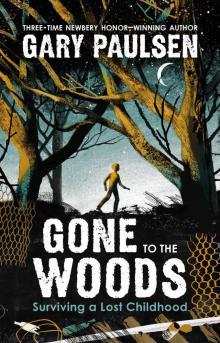 Gone to the Woods
Gone to the Woods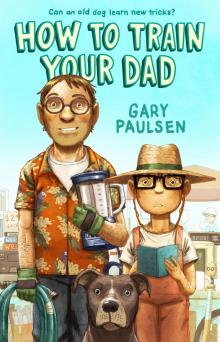 How to Train Your Dad
How to Train Your Dad The Haymeadow
The Haymeadow Amos Binder, Secret Agent
Amos Binder, Secret Agent The River br-2
The River br-2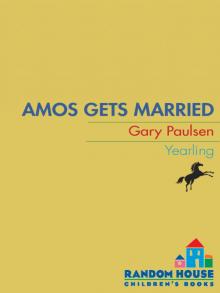 Amos Gets Married
Amos Gets Married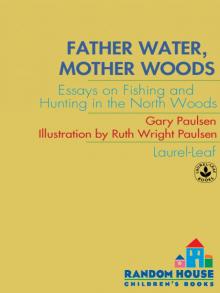 Father Water, Mother Woods
Father Water, Mother Woods Dunc and the Scam Artists
Dunc and the Scam Artists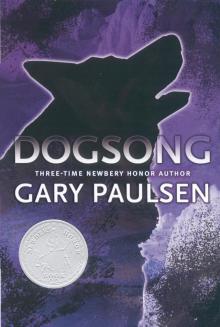 Dogsong
Dogsong Alida's Song
Alida's Song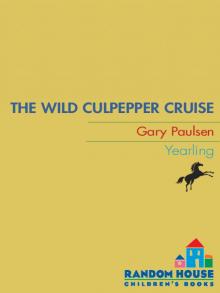 The Wild Culpepper Cruise
The Wild Culpepper Cruise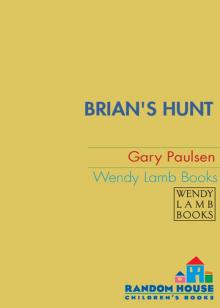 Brian's Hunt
Brian's Hunt Woods Runner
Woods Runner Dunc and Amos on Thin Ice
Dunc and Amos on Thin Ice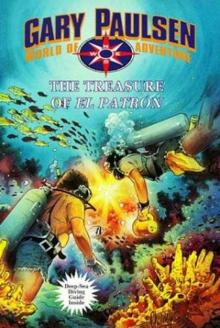 The Treasure of El Patron
The Treasure of El Patron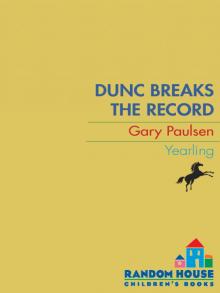 Dunc Breaks the Record
Dunc Breaks the Record Harris and Me
Harris and Me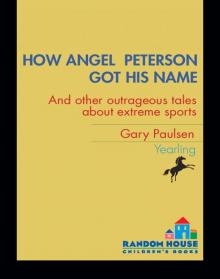 How Angel Peterson Got His Name
How Angel Peterson Got His Name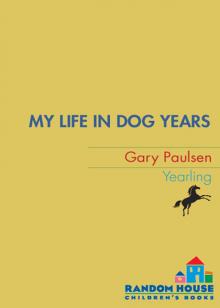 My Life in Dog Years
My Life in Dog Years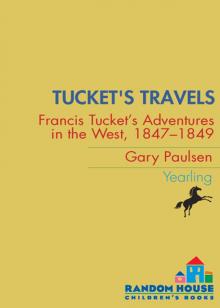 Tucket's Travels
Tucket's Travels Canyons
Canyons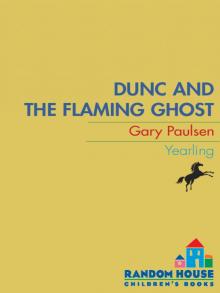 Dunc and the Flaming Ghost
Dunc and the Flaming Ghost The Schernoff Discoveries
The Schernoff Discoveries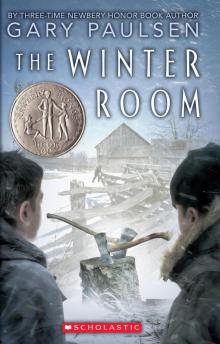 The Winter Room
The Winter Room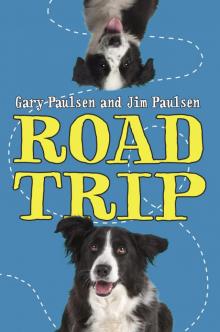 Road Trip
Road Trip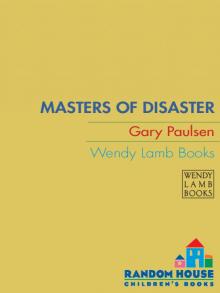 Masters of Disaster
Masters of Disaster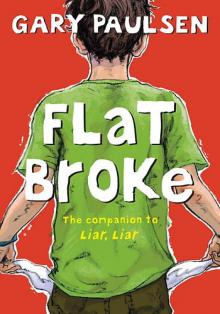 Flat Broke
Flat Broke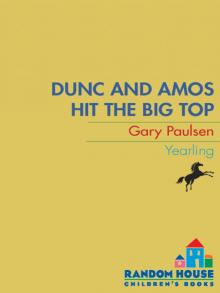 Dunc and Amos Hit the Big Top
Dunc and Amos Hit the Big Top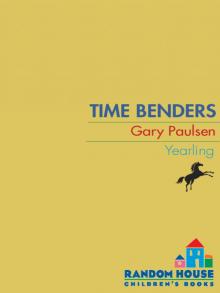 Time Benders
Time Benders Caught by the Sea
Caught by the Sea Dancing Carl
Dancing Carl The Seventh Crystal
The Seventh Crystal The Boy Who Owned the School
The Boy Who Owned the School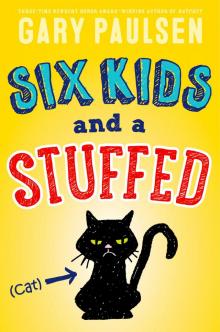 Six Kids and a Stuffed Cat
Six Kids and a Stuffed Cat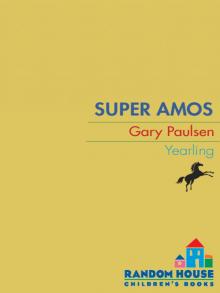 Super Amos
Super Amos Dunc and the Greased Sticks of Doom
Dunc and the Greased Sticks of Doom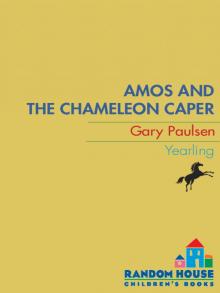 Amos and the Chameleon Caper
Amos and the Chameleon Caper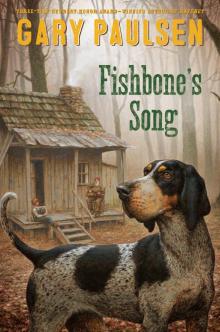 Fishbone's Song
Fishbone's Song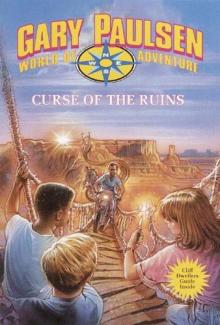 Curse of the Ruins
Curse of the Ruins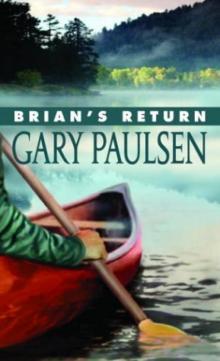 Brian's Return br-4
Brian's Return br-4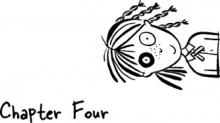 Molly McGinty Has a Really Good Day
Molly McGinty Has a Really Good Day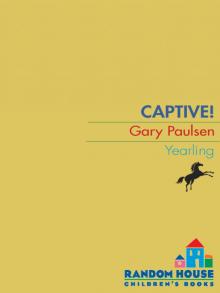 Captive!
Captive! Culpepper's Cannon
Culpepper's Cannon The Car
The Car Puppies, Dogs, and Blue Northers
Puppies, Dogs, and Blue Northers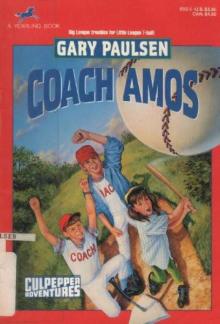 Coach Amos
Coach Amos Mudshark
Mudshark The White Fox Chronicles
The White Fox Chronicles Dunc and Amos Meet the Slasher
Dunc and Amos Meet the Slasher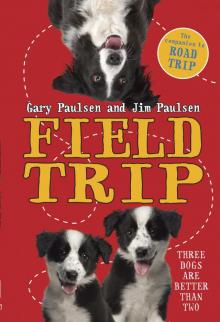 Field Trip
Field Trip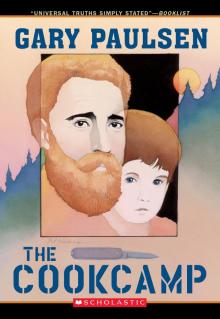 The Cookcamp
The Cookcamp Crush
Crush Lawn Boy Returns
Lawn Boy Returns Liar, Liar k-1
Liar, Liar k-1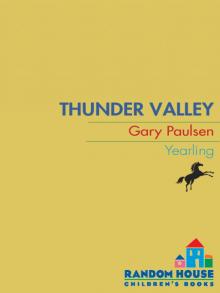 Thunder Valley
Thunder Valley The Tent
The Tent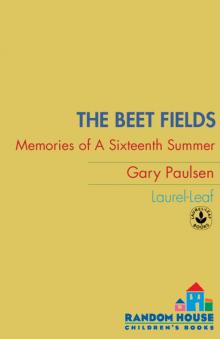 The Beet Fields
The Beet Fields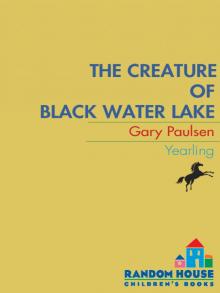 The Creature of Black Water Lake
The Creature of Black Water Lake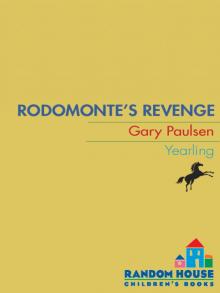 Rodomonte's Revenge
Rodomonte's Revenge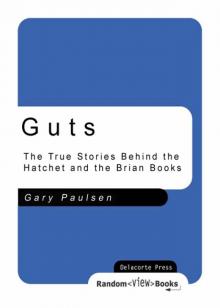 Guts
Guts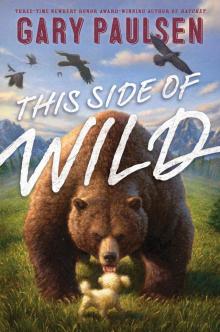 This Side of Wild
This Side of Wild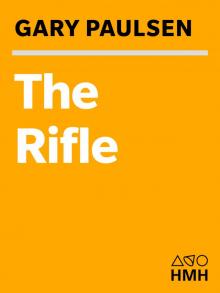 The Rifle
The Rifle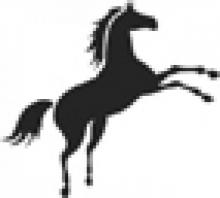 The Time Hackers
The Time Hackers Amos Goes Bananas
Amos Goes Bananas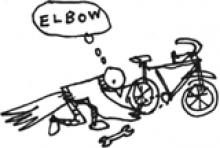 The Amazing Life of Birds
The Amazing Life of Birds Dunc's Undercover Christmas
Dunc's Undercover Christmas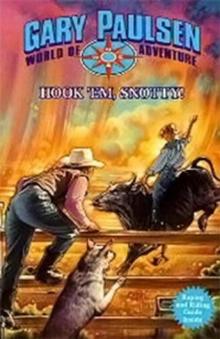 Hook 'Em Snotty
Hook 'Em Snotty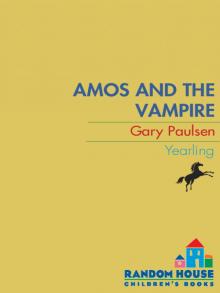 Amos and the Vampire
Amos and the Vampire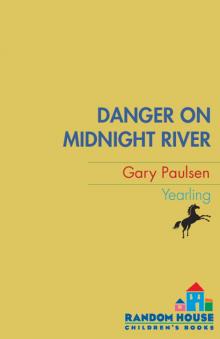 Danger on Midnight River
Danger on Midnight River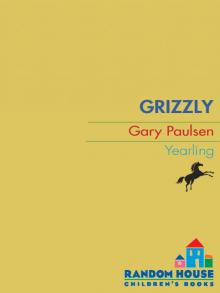 Grizzly
Grizzly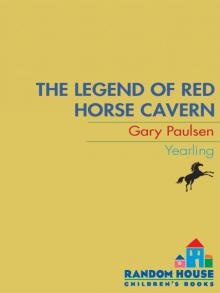 The Legend of Red Horse Cavern
The Legend of Red Horse Cavern The Transall Saga
The Transall Saga Lawn Boy
Lawn Boy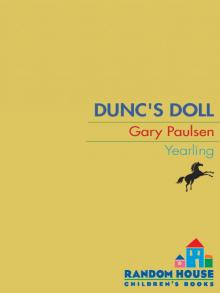 The Case of Dunc's Doll
The Case of Dunc's Doll A Christmas Sonata
A Christmas Sonata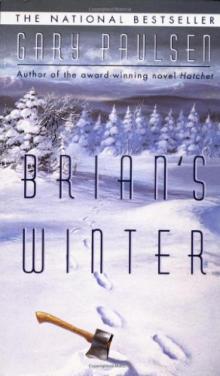 Brian's Winter br-3
Brian's Winter br-3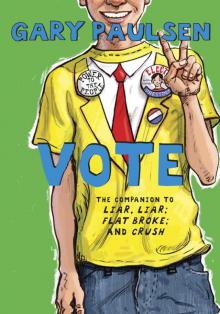 Vote
Vote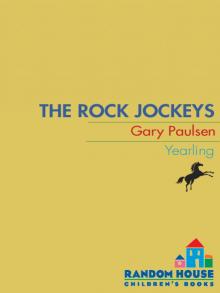 The Rock Jockeys
The Rock Jockeys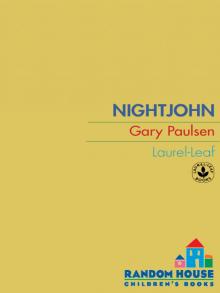 Nightjohn
Nightjohn Escape from Fire Mountain
Escape from Fire Mountain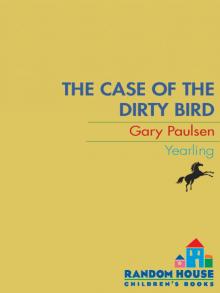 The Case of the Dirty Bird
The Case of the Dirty Bird Brian's Winter
Brian's Winter Amos's Killer Concert Caper
Amos's Killer Concert Caper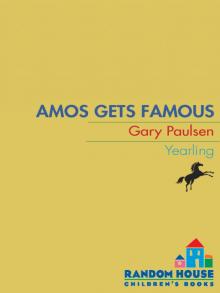 Amos Gets Famous
Amos Gets Famous Brian's Return
Brian's Return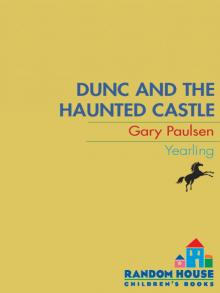 Dunc and the Haunted Castle
Dunc and the Haunted Castle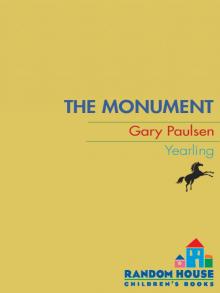 The Monument
The Monument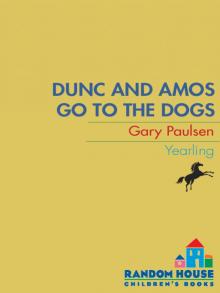 Dunc and Amos Go to the Dogs
Dunc and Amos Go to the Dogs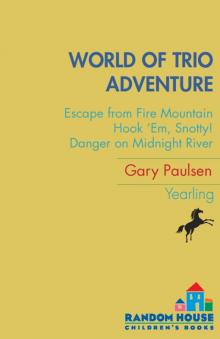 World of Adventure Trio
World of Adventure Trio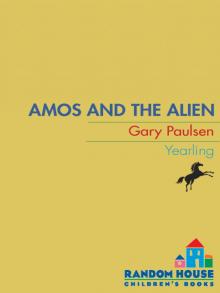 Amos and the Alien
Amos and the Alien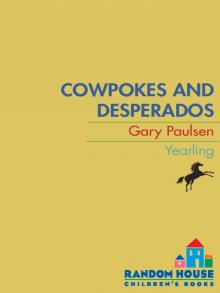 Cowpokes and Desperadoes
Cowpokes and Desperadoes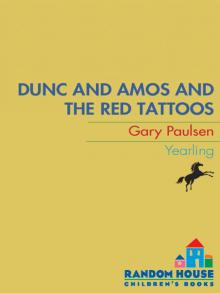 Dunc and Amos and the Red Tattoos
Dunc and Amos and the Red Tattoos Dunc's Dump
Dunc's Dump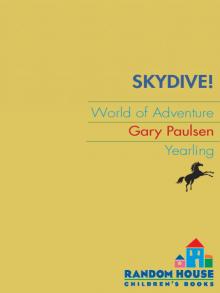 Skydive
Skydive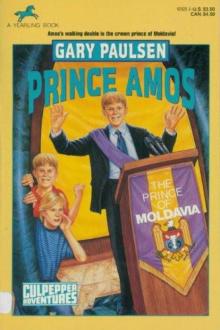 Prince Amos
Prince Amos The Gorgon Slayer
The Gorgon Slayer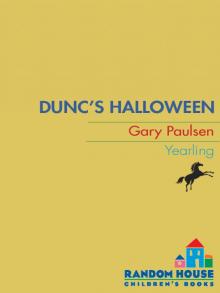 Dunc's Halloween
Dunc's Halloween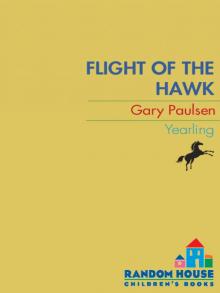 Flight of the Hawk
Flight of the Hawk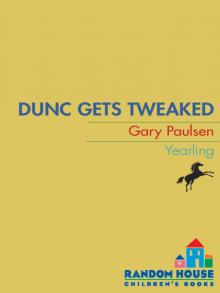 Dunc Gets Tweaked
Dunc Gets Tweaked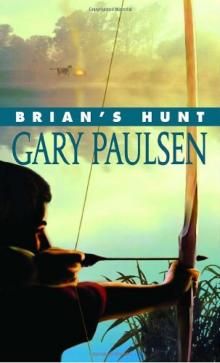 Brian's Hunt br-5
Brian's Hunt br-5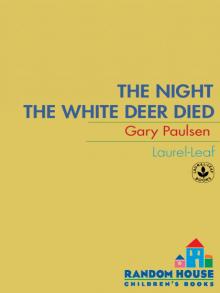 The Night the White Deer Died
The Night the White Deer Died